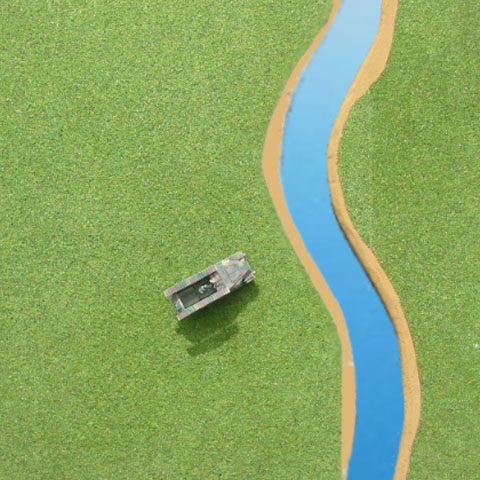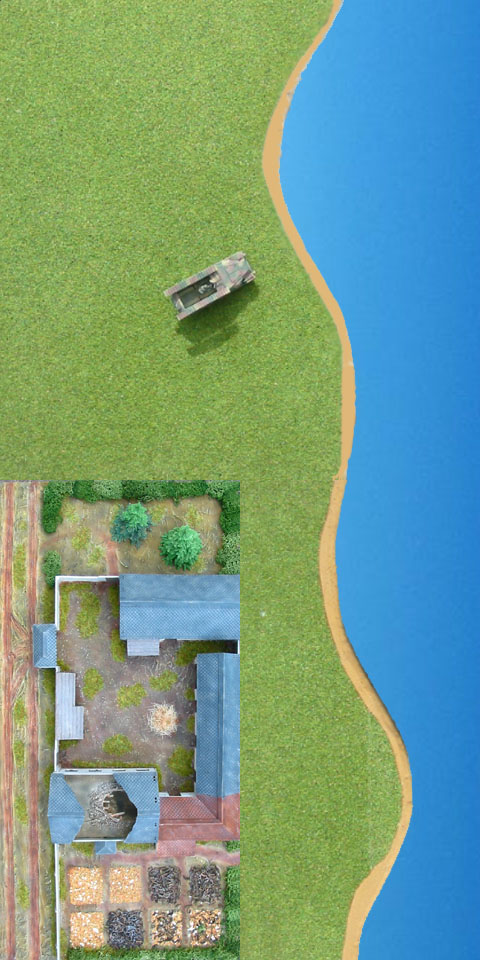River or Beach Wargame Terrain Module
1:72 Scale Scenery for Simulation Games

The photo shows a simple 50 × 50 cm stream or river terrain module consisting of two separate riverbank sections which may be placed closer together or wider apart to vary the width of the water obstable. Plastic foil, glossy blue or sandcoloured card may be placed underneath the riverbank sections to simulate flowing water or dry river-beds. The riverbanks exit the northern and southern edges of the terrain tile exactly 35 cm away from the western edge and 10 cm from the eastern edge to ensure that this terrain module will match with other river tiles placed against it. This simple and unrealistically flat terrain module was created many years before we discovered cellulose hills, it consists of 10 mm chipboard covered with a model railway grass mat. The slope of the riverbanks was created with a Dremel tool, and the banks were then painted in an appropriate sand colour. Low hills, trees, hedges, buildings, latex road sections, bridges and other scenic effects may be added to break up the line of sight and turn this flat ground into a challenging piece of wargame terrain.
Tools & Materials
- 10 mm Chipboard, cut to 50 × 50 cm
- Model Railway Grass Mat
- PVA Glue
- Acrylic Paint
- Size 5 Flat Brush
Turning Rivers into Beaches

The separate riverbank sections shown above may be placed side by side to create 100 cm of beachfront suitable for amphibious landings. As an example, we have filled the 50 × 25 cm gap in the lower left corner with a roadside farm module. Alternatively, a strongpoint terrain module might be used to provide anti-tank and machine gun flanking fire across adjacent beachfront sections.
Simple terrain tiles like this river module with separate riverbank sections can be used to create an enormous variety of streams, rivers, wadies, sunken roads, or beaches for wargames. We’ve even placed it on top of other flat terrain tiles to create a contour line. Unlike our styrofoam terrain sections which have warped, chipped, discoloured, and collected sticky dust, this chipboard terrain module is still clean and undamaged after decades of fighting over it. We use a Variable Terrain Generation Chart for Fire and Fury and other Horse&Musket games to make players wary of charging into or across a terrain module until it has been properly scouted. Hidden terrain markers may turn seemingly open ground into a plowed field which counts as rough ground for movement purposes. Woods may turn out to be open or rough ground, and there may be natural trenches or breastworks inside which the player was not previously aware of. Using these variable terrain effects, even our regular players will not know in advance how to tackle a certain piece until they have scouted and familiarized themselves with it once again.